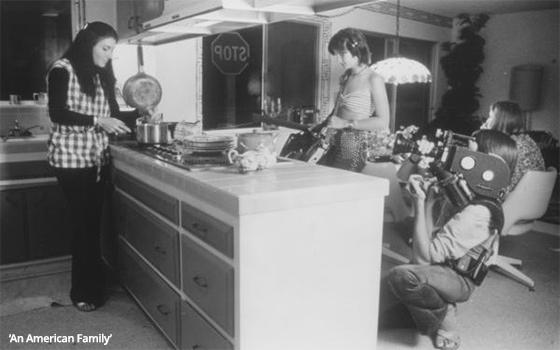Commentary
Which One Started Reality TV: 'American Family' Or 'Seven Up'?
- by Adam Buckman , Featured Columnist, March 5, 2024

A new documentary about the sensational 1970s docuseries that captured the messy real life of an American family revives memories of a time when there were still ways of telling stories on TV that were as yet undiscovered.
But was “An American Family” really the first one? The question arises now with the arrival of “An American Family at 50,” which looks back at the “American Family” phenomenon.
“An American Family” is considered to be the first made-for-TV documentary in which a family -- the Louds of Santa Barbara, California -- agreed to be followed around by camera crews.
The Louds were filmed in 1971 and 1972 for an estimated 300 hours from which 12 episodes were produced. The series premiered in January 1973 (51 years ago, not 50).
advertisement
advertisement
The show made headlines and national magazine covers. The attraction came from the show’s portrayal of an American family that was innovative for its time.
For the first time on television, Americans were seeing a real family, not one created for television. It was a family just like them with faults, failings, affection and drama.
The show’s attractiveness stemmed from the way viewers could relate to the Louds. Along with that was the show’s novelty. No one had ever seen anything like it before.
While focused mainly on the everyday lives of the Louds, the show was not without its moments of high drama.
The most memorable such moment was likely when mom Pat Loud -- on the show -- informed her husband, Bill, that she wanted a divorce. The couple had been married for 21 years.
Pat and Bill are deceased now, along with one of their sons, Lance Loud, possibly the first openly gay character on TV.
However, four of the Loud children are still alive, but none of them are in the 50th anniversary documentary. The TV Blog asked why, but received no answer before deadline.
Instead, interview subjects in the show include Dick Cavett, who featured Loud family members on his long-ago talk show; Jonathan Murray, one of the producers of “The Real World” on MTV, also the first reality series of its kind and a descendant of sorts of “An American Family”; and the two directors of “Cinema Verite,” a 2011 movie about “An American Family” with James Gandolfini and Diane Lane as Bill and Pat Loud.
In the lore of TV history, “An American Family” is widely considered to be the progenitor of so many reality series centered on real people and families, most often celebrity ones, from “The Osbournes” to “Keeping Up With the Kardashians.”
And yet, director Michael Apted’s “Seven Up!,” which first aired in 1964, certainly preceded “An American Family” and similarly chronicled the lives of ordinary people.
“Seven Up!” was the first of a series of documentaries that appeared every seven years following the same group of youngsters (in this case, English ones) as they grew into adulthood, all the way up to “63 Up” in 2019.
A few of the original participants dropped out over the years and two have died, but the sheer length of this project earns its position as unique in the annals of television.
Michael Apted died in 2021, and there has been no word on whether a “70 Up” is in the works for 2026.
Like “An American Family,” the “Up” series held a mirror up to the rest of us. They were the first of their kinds, and maybe the last of their kinds too.
“An American Family at 50” premieres on Tuesday, March 5, at 8 p.m. Eastern on WNET/13, New York. Check local listings for other PBS airtimes.




Agreed, Adam. "American Family" was probably the pace setter--especially as it was serialized, not just a one-off. As for the broader definition of "reality" TV, as opposed to documentary TV many of the golden oldies of the early and mid -1950s also qualify. For example, Dave Garraway's show which took viewers behind the scenes as the action was presented, showing them how the cameramen, gaffers, etc. worked to capture what the host, singers, etc. were doing. Then there was Edward R. Mussow's "Person To Person" where he visited famous people in their homes, chatted, was shown around, etc. And, on the comedic side, there was Alan Funt's "Candid Camera". Those were the good old days---or were they?